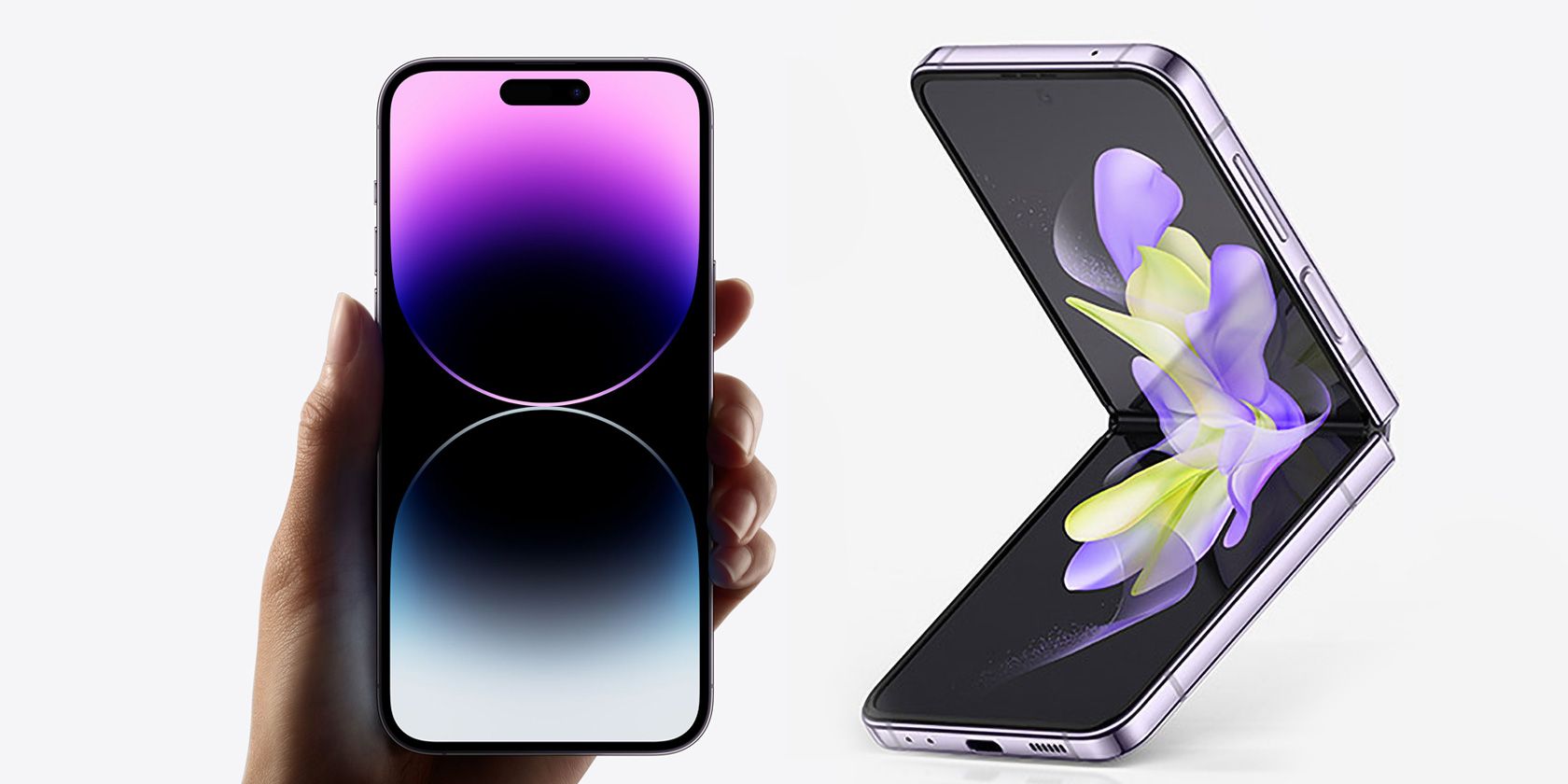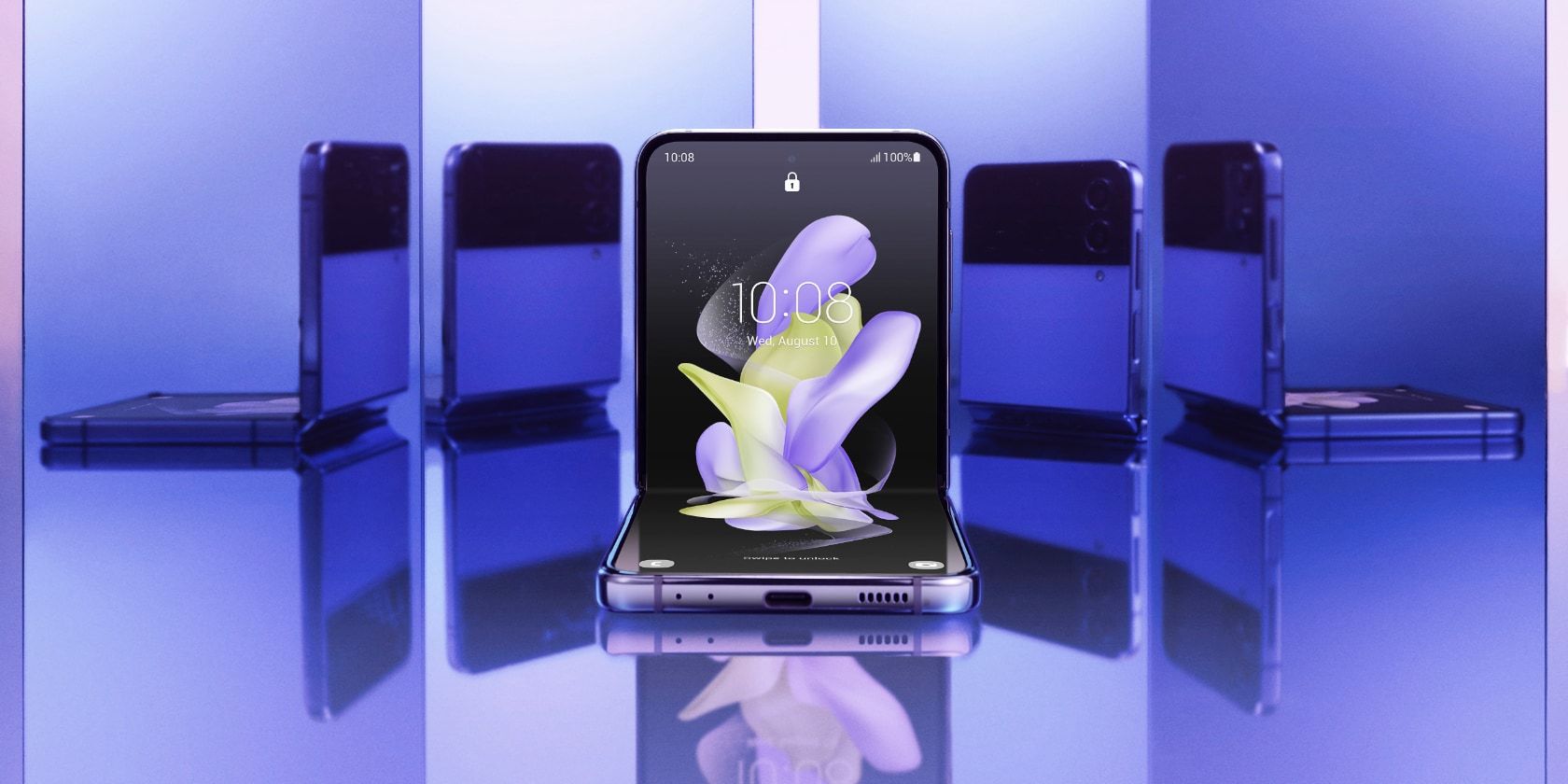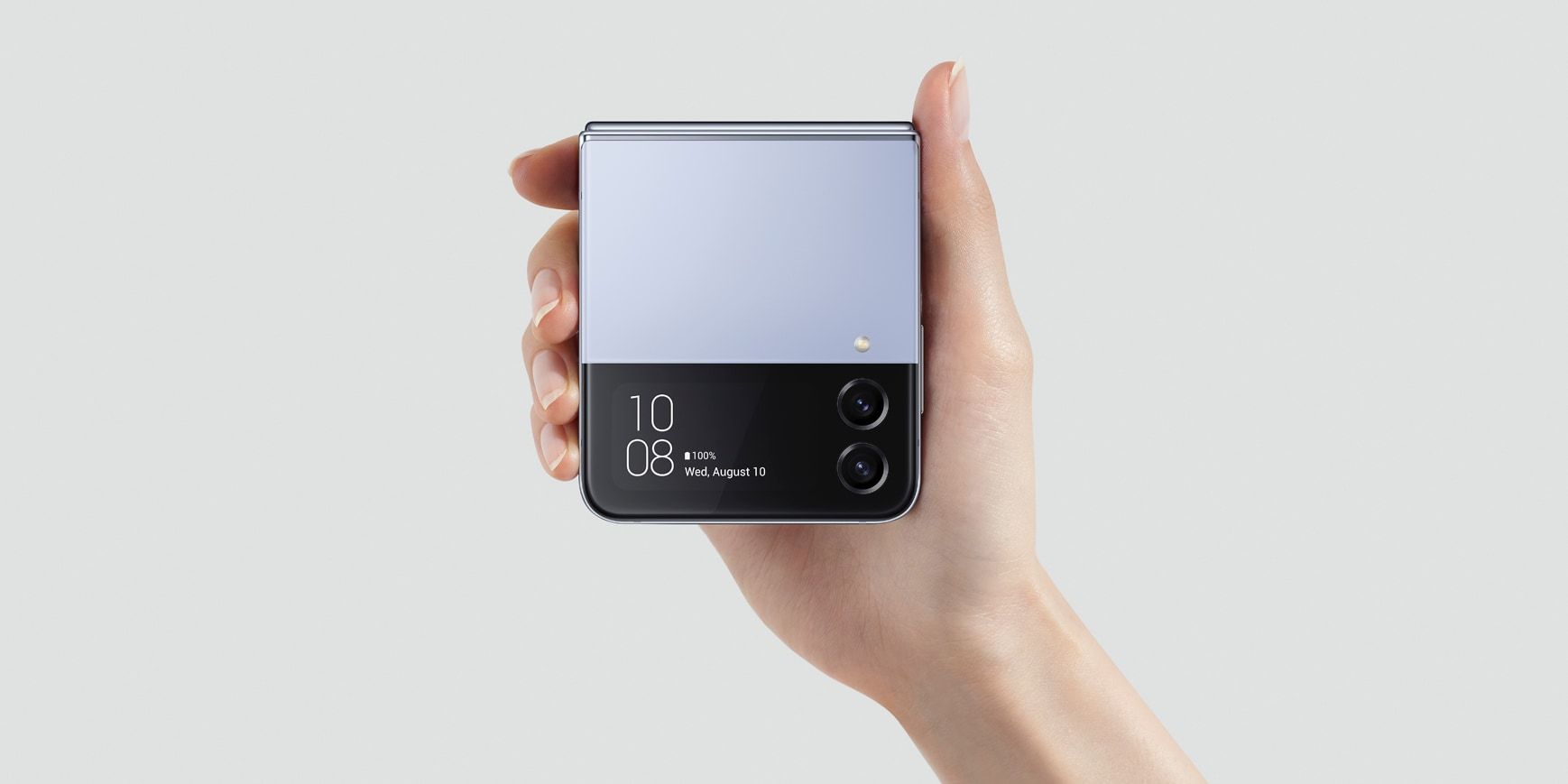Although foldable phones aren't mainstream yet, more buyers seem to be open to trying them out than ever. And if you're one of them, the Samsung Galaxy Z Flip 4 is probably on your radar.
However, before ordering the Galaxy Z Flip 4, it's a good idea to compare it with the iPhone 14 Pro to see if a foldable phone is worth it over a traditional alternative. Both devices launched at $999, so let's see which offers more value.
Dimensions and Build Quality
- iPhone 14 Pro: 147.5 x 71.5 x 7.9 mm; 206 grams; IP68 dust and water-resistant
- Samsung Galaxy Z Flip 4: Unfolded: 165.2 x 71.9 x 6.9 mm; Folded: 84.9 x 71.9 x 15.9-17.1 mm; 187 grams; IPX8 water-resistant
The Galaxy Z Flip 4 is taller, broader, thinner, and lighter than the iPhone 14 Pro, and since it folds, it takes less room in your pocket. It can also stand on its own without needing a holder.
The iPhone 14 Pro has a stainless steel frame with Ceramic Shield protection on the front glass. The Galaxy Z Flip 4 has an aluminum frame and uses ultra-thin folding glass with a protective plastic layer slapped on top and Gorilla Glass Victus+ protection on the back.
Because of the protective plastic layer on top, the ultra-thin glass underneath is less likely to shatter after an accidental drop. But at the same time, the screen is so fragile that you can easily dent or scratch it with your fingernails.
The iPhone 14 Pro has IP68 water and dust resistance, but the Flip 4 skips out on dust resistance due to its hinge design. For buyers in the US, the iPhone 14 series is e-SIM only and doesn't have a physical SIM slot, so you might want to avoid it if your carrier doesn't support e-SIM.
Display
- iPhone 14 Pro: 6.1-inch Super Retina XDR OLED display; 120Hz ProMotion; 1179 x 2556 resolution; 460 PPI; 2,000 nits peak brightness; Always-on Display
- Samsung Galaxy Z Flip 4: Main screen: 6.7-inch Foldable Dynamic AMOLED 2X display; 120Hz refresh rate; 1080 x 2640 resolution; 426 PPI; 1,200 nits peak brightness; Cover screen: 1.9-inch Super AMOLED display; 260 x 512 resolution
The Flip 4 has two displays: a 6.7-inch 120Hz FHD+ AMOLED main screen and a 1.9-inch Super AMOLED cover screen. The iPhone 14 Pro has a 6.1-inch 120Hz FHD+ OLED screen.
Both devices have LTPO 2.0 technology which means they can scale down the refresh rate all the way to 1Hz to save battery life. The iPhone has a higher peak brightness of 2,000 nits, while the Flip 4 is limited to 1,200 nits.
After years of sporting the notch, the iPhone 14 Pro finally introduced a new pill-shaped cutout called the Dynamic Island, which can intuitively morph into different shapes to show you glanceable info and ongoing background activities, serving as a clever multitasking tool.
The cover screen on the Flip 4 shows you such as date and time, weather, now-playing music, notifications, battery percentage, and lets you change quick settings—all without opening your device. The idea here is to lower your screen time by reducing the need to check your phone.
Camera
- iPhone 14 Pro: 48MP f/1.8 primary, sensor-shift OIS, dual-pixel PDAF, 4K video at 60FPS; 12MP f/2.2 ultra-wide (120-degree FoV), dual-pixel PDAF, macro photography; 12MP f/2.8 telephoto, OIS, 3x optical zoom; Front: 12MP f/1.9, PDAF, 4K video at 60fps
- Samsung Galaxy Z Flip 4: 12MP f/1.8 primary, OIS, dual-pixel PDAF, 4K video at 60FPS; 12MP f/2.2 ultra-wide (123-degree FoV); Front: 10MP f/2.4, 4K video at 30fps
The iPhone 14 Pro has four cameras in total: an upgraded 48MP main sensor, a 12MP ultra-wide sensor with 120-degree FoV, a 12MP telephoto sensor with 3x optical zoom, and a 12MP front camera. It can shoot 4K video at 60FPS on the back and the front.
The Galaxy Z Flip 4 has three cameras in total: a 12MP main sensor, a 12MP ultra-wide sensor with 123-degree FoV, and a 10MP front camera. It can shoot 4K video at 60FPS on the back and 30FPS on the front.
We've written at length about the camera differences between iPhones and Samsung phones, and the same observations apply here as well, with some minor variations.
iPhones are more consistent, take better videos, and lean towards warmer and more realistic colors. Samsung phones are more versatile, have excellent edge detection, and lean towards cooler and more pleasing colors, making them more appropriate for sharing on social media.
On the Galaxy Flip 4, you can fold the device and use the main camera for taking selfie photos and videos while utilizing the cover screen to pose better. All this can help significantly improve the quality of your shots compared to the 10MP front camera on the main screen.
On the iPhone 14 Pro, the new 48MP main sensor promises sharper and more detailed shots with much better low-light photography. Due to the high resolution, you can zoom in and crop your photos without losing much detail.
Processor
- iPhone 14 Pro: A16 Bionic; 4nm fabrication; 5-core GPU
- Samsung Galaxy Z Flip 4: Snapdragon 8+ Gen 1; 4nm fabrication; Adreno 730 GPU
Although the Snapdragon 8+ Gen 1 is a great chip, it doesn't stand a chance against the Apple A16 Bionic, which remains the most powerful and efficient smartphone chip ever. On paper, the iPhone 14 Pro is the clear winner.
That said, the average user shouldn't be too concerned about benchmark scores. When interacting with the UI, you'll likely not find any significant difference between the two devices in speed or smoothness.
RAM and Storage
- iPhone 14 Pro: 6GB RAM; 128GB/256GB/512GB/1TB storage
- Samsung Galaxy Z Flip 4: 8GB RAM; 128GB/256GB/512GB storage
Since iPhones are better at RAM management, the 6GB RAM on the iPhone 14 Pro feels similar to the 8GB RAM on the Galaxy Z Flip 4. Both devices start at 128GB of storage, but only the iPhone offers a 1TB storage option.
Check out how much storage you need if you're unsure.
Battery
- iPhone 14 Pro: 3200mAh battery; 20W wired charging; 15W MagSafe wireless charging support; 7.5W with Qi wireless charging
- Samsung Galaxy Z Flip 4: 3700mAh battery; 25W wired charging, 15W wireless charging, 4.5W reverse wireless charging
Just like RAM management, iPhones are also better at battery consumption. This is why even with a physically smaller 3200mAh cell, the iPhone 14 Pro can deliver longer battery life than the bigger 3700mAh cell on the Galaxy Z Flip 4.
Both devices have similar charging speeds, so it's not a reason to pick one over the other. Sadly, the iPhone 14 Pro still comes with an outdated Lightning port instead of a USB-C port, which is far superior.
Foldables Are Still Not Perfect Yet
As amazing as it is to have a foldable phone, we think the iPhone 14 Pro is still the safer and more reliable choice for most people and offers more value than the Galaxy Z Flip 4.
The iPhone has better battery life, a telephoto camera, a more powerful processor, a Dynamic Island cutout, a more robust build, Crash Detection, and Emergency SOS via satellite—all while costing the same.
The Galaxy Z Flip 4 is a good phone and will undoubtedly grab attention, but it's clear that the folding design comes with compromises.



-(1).jpg)

